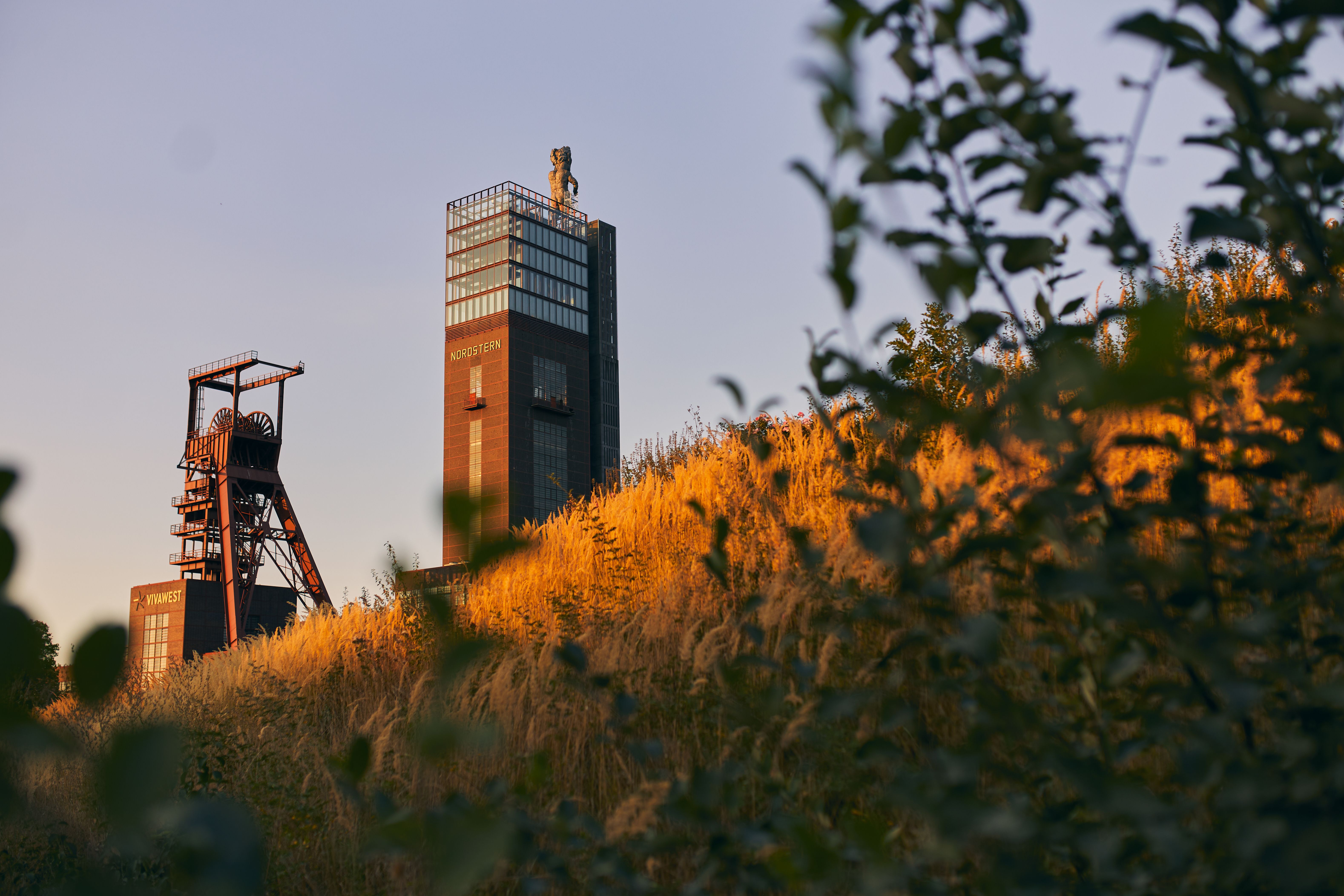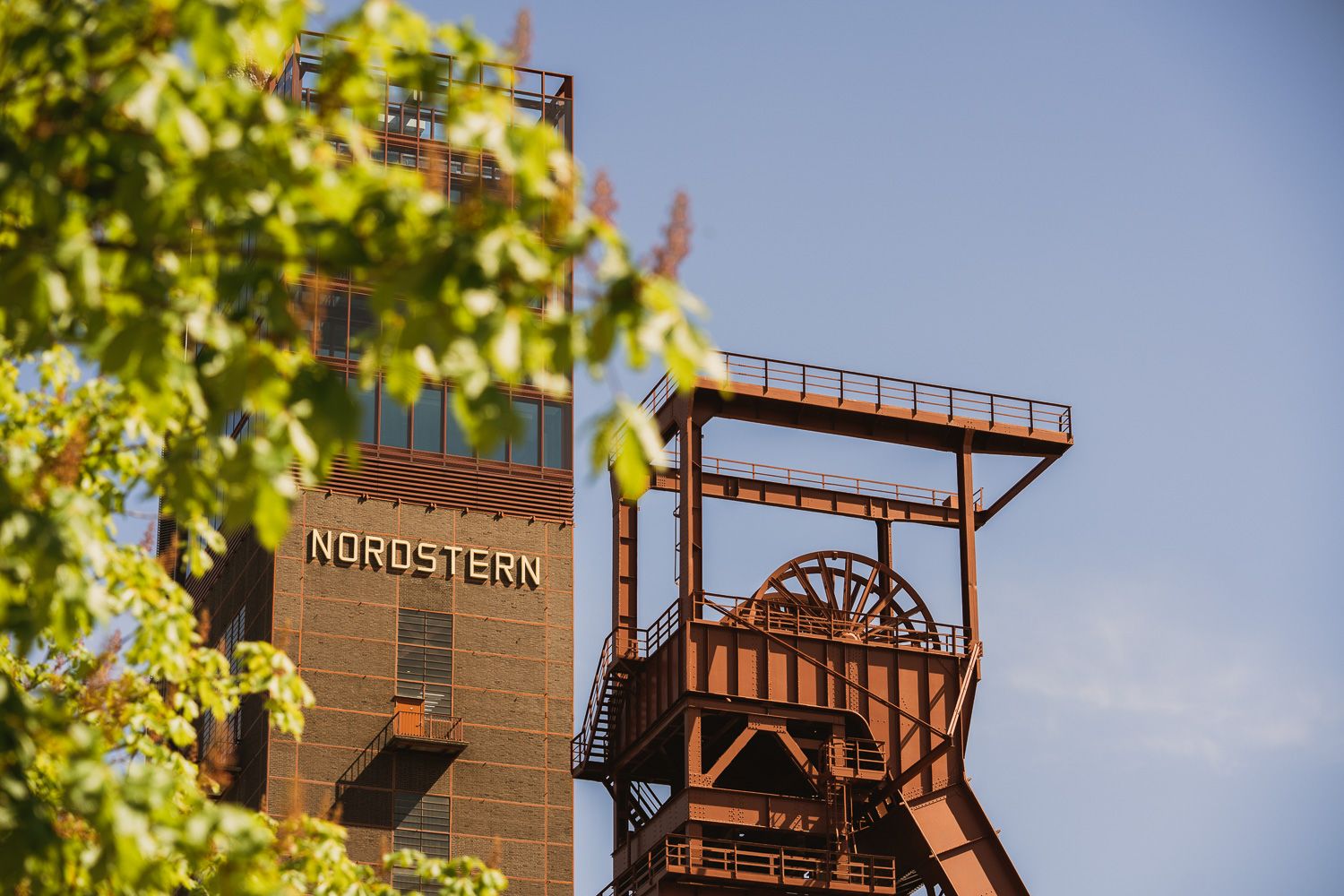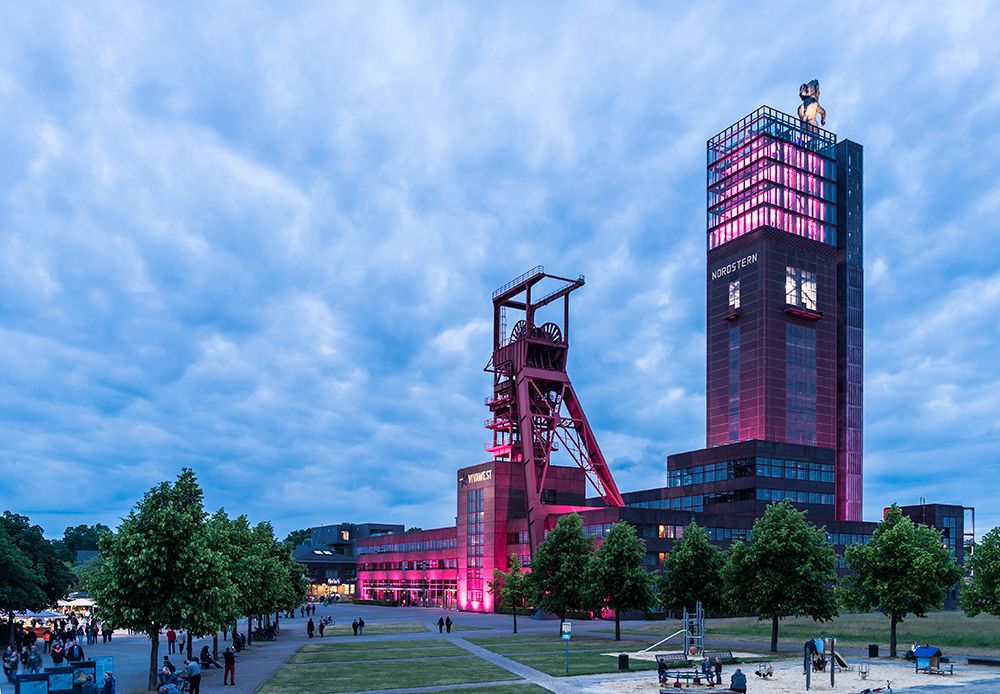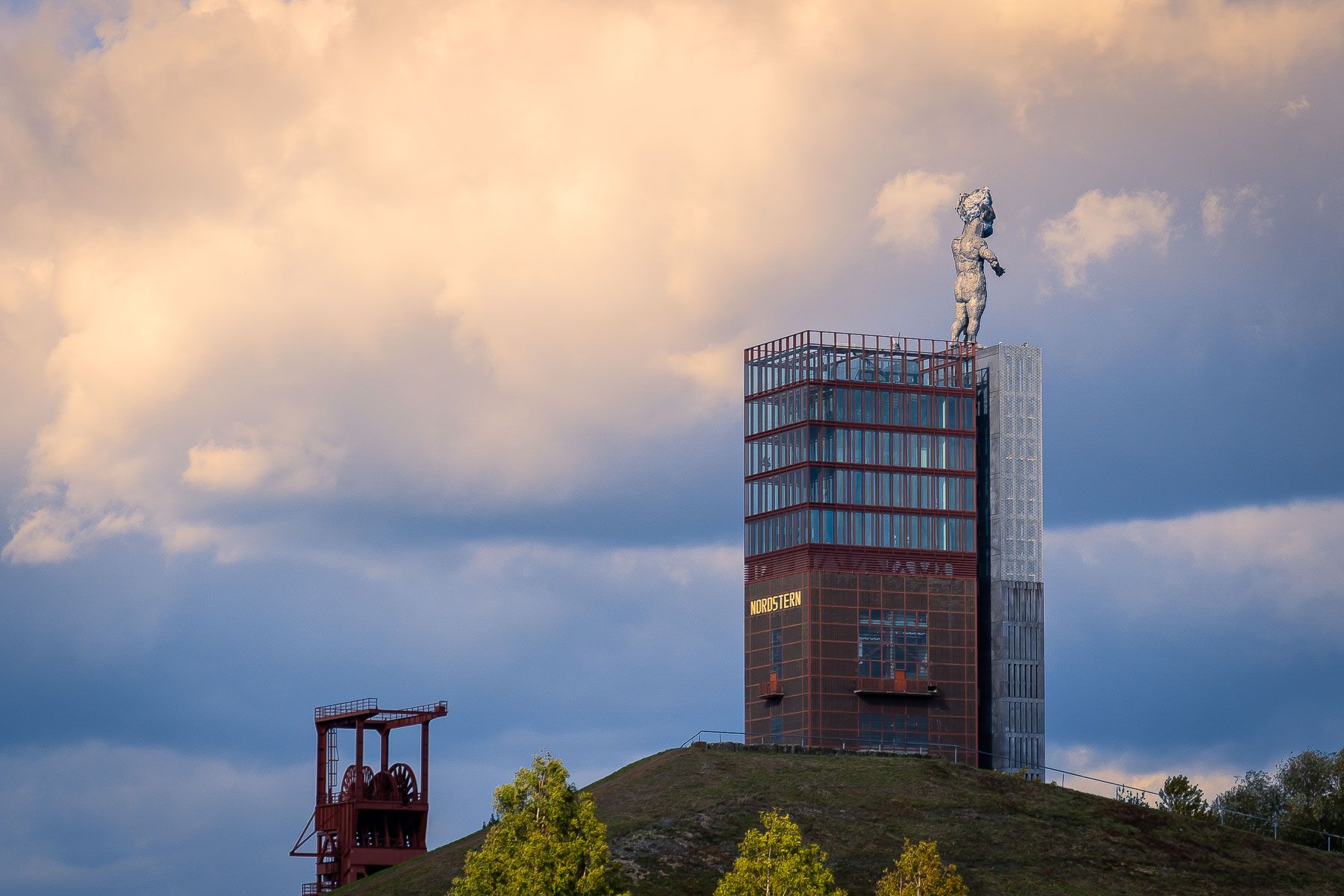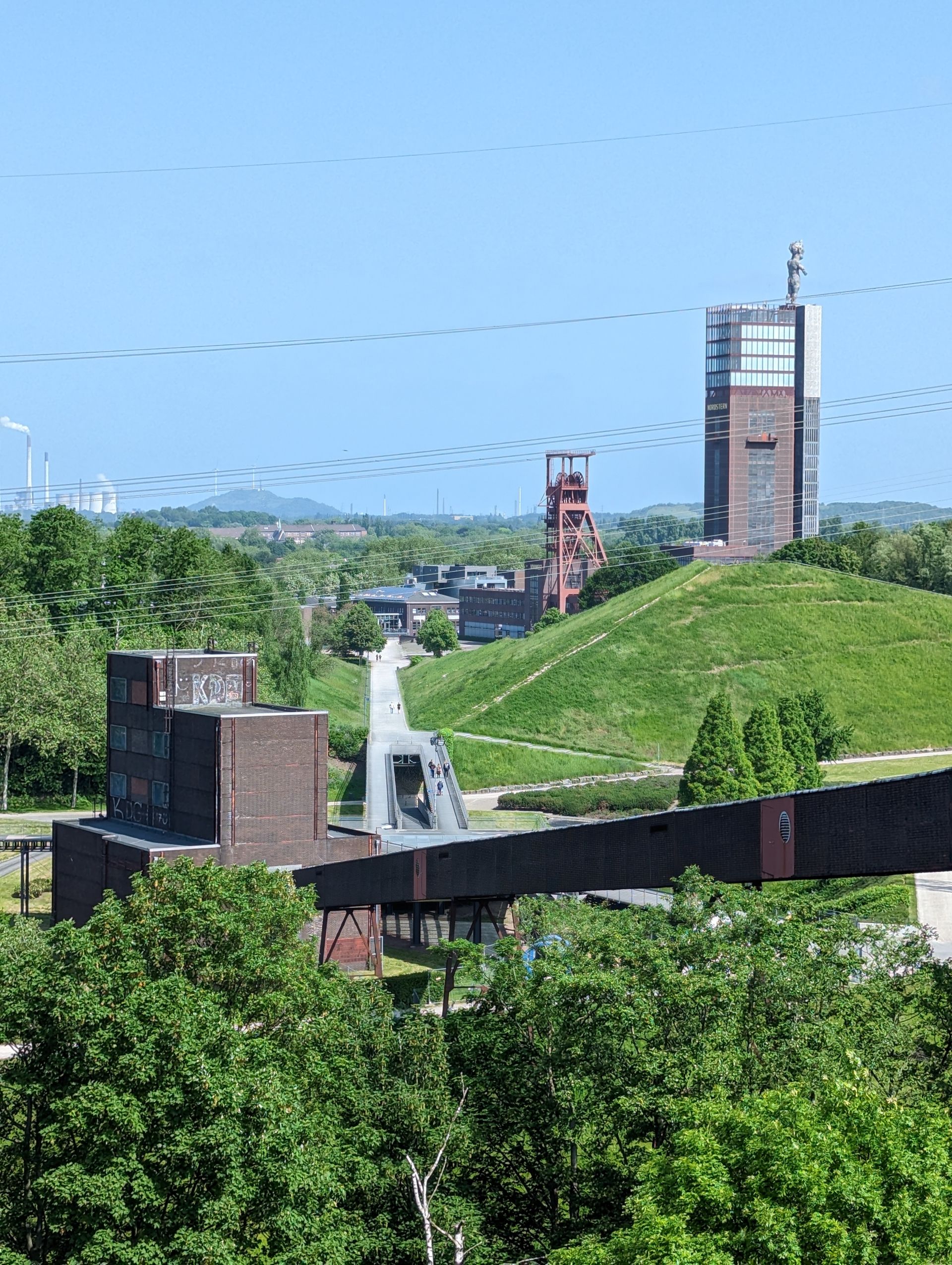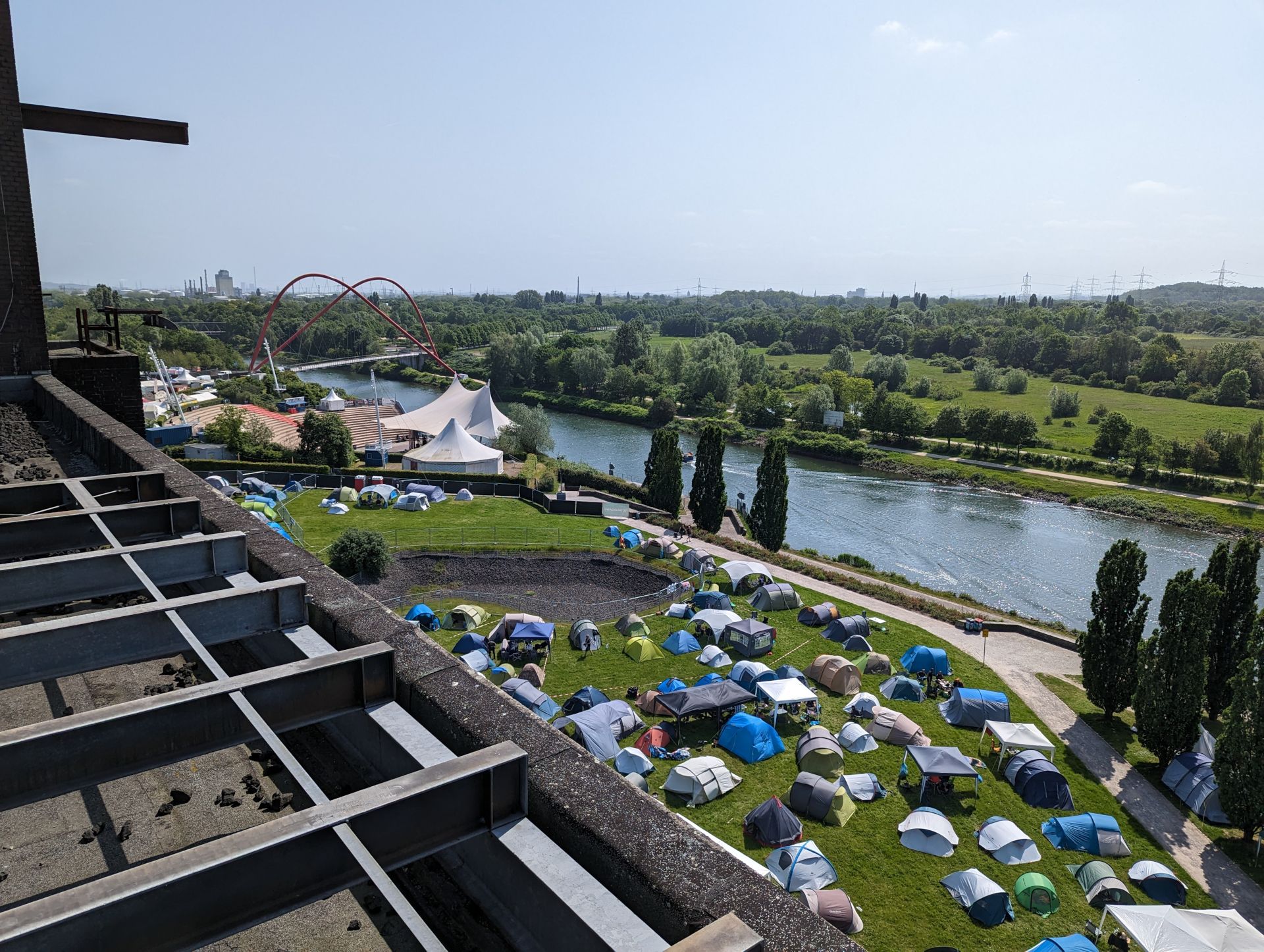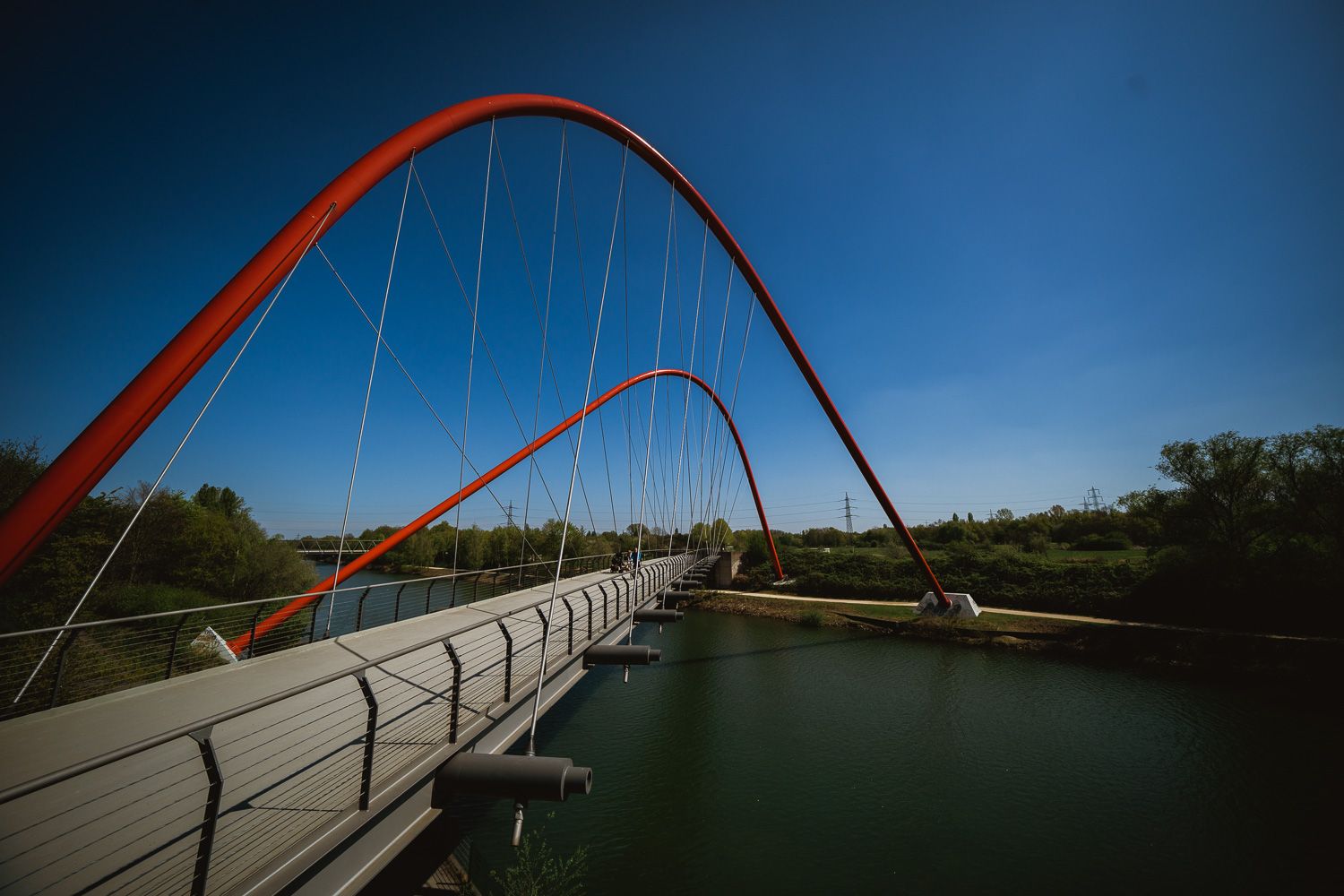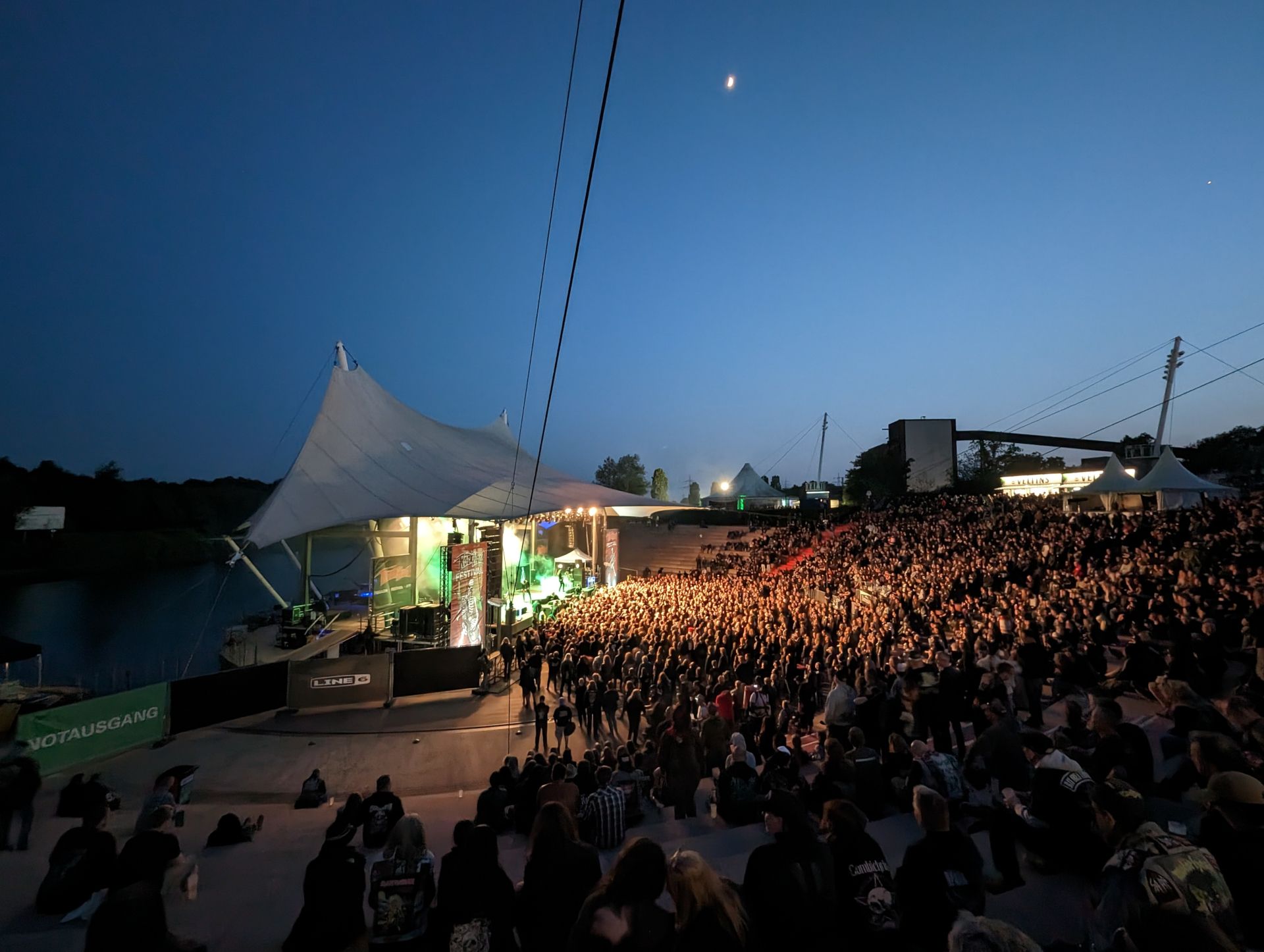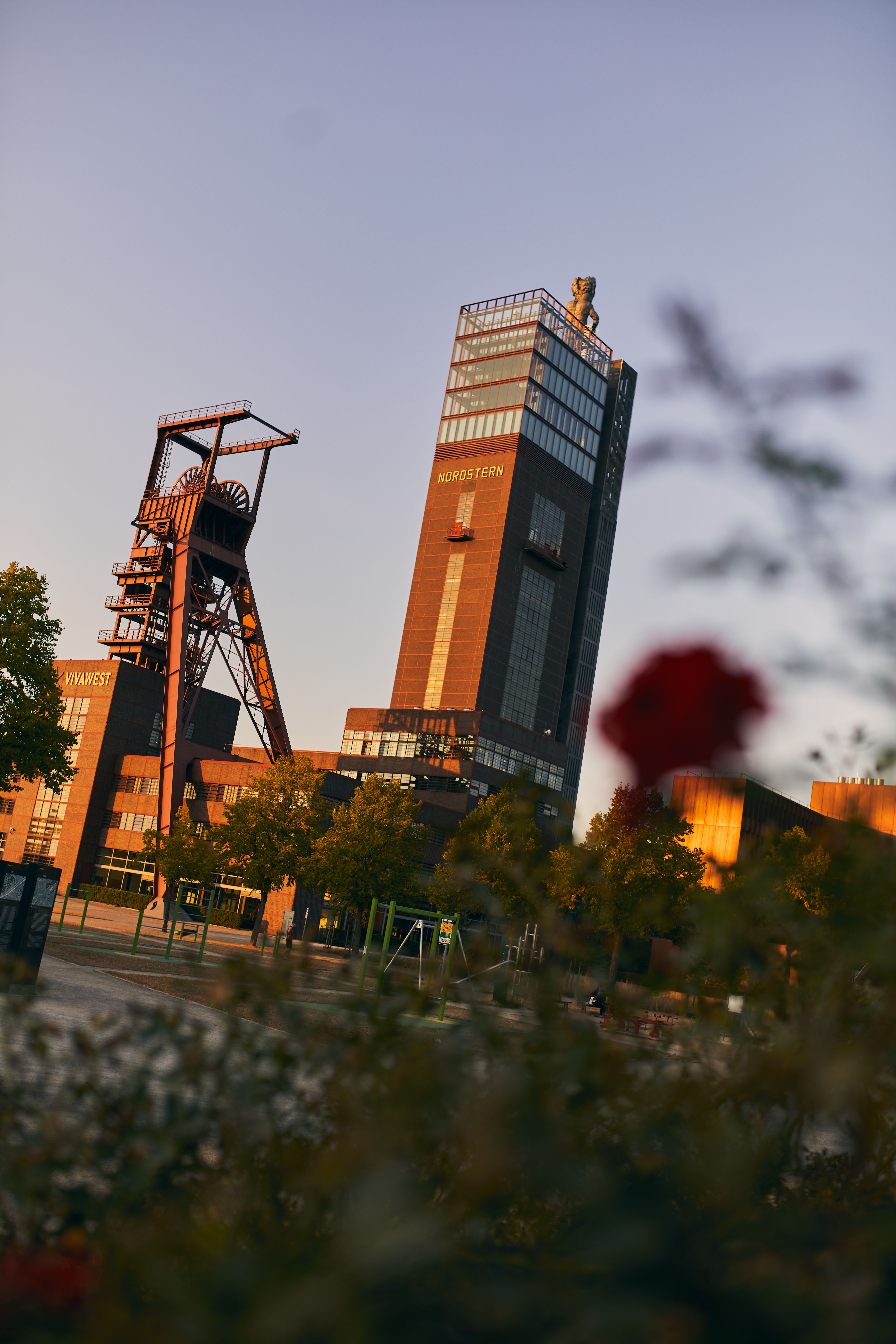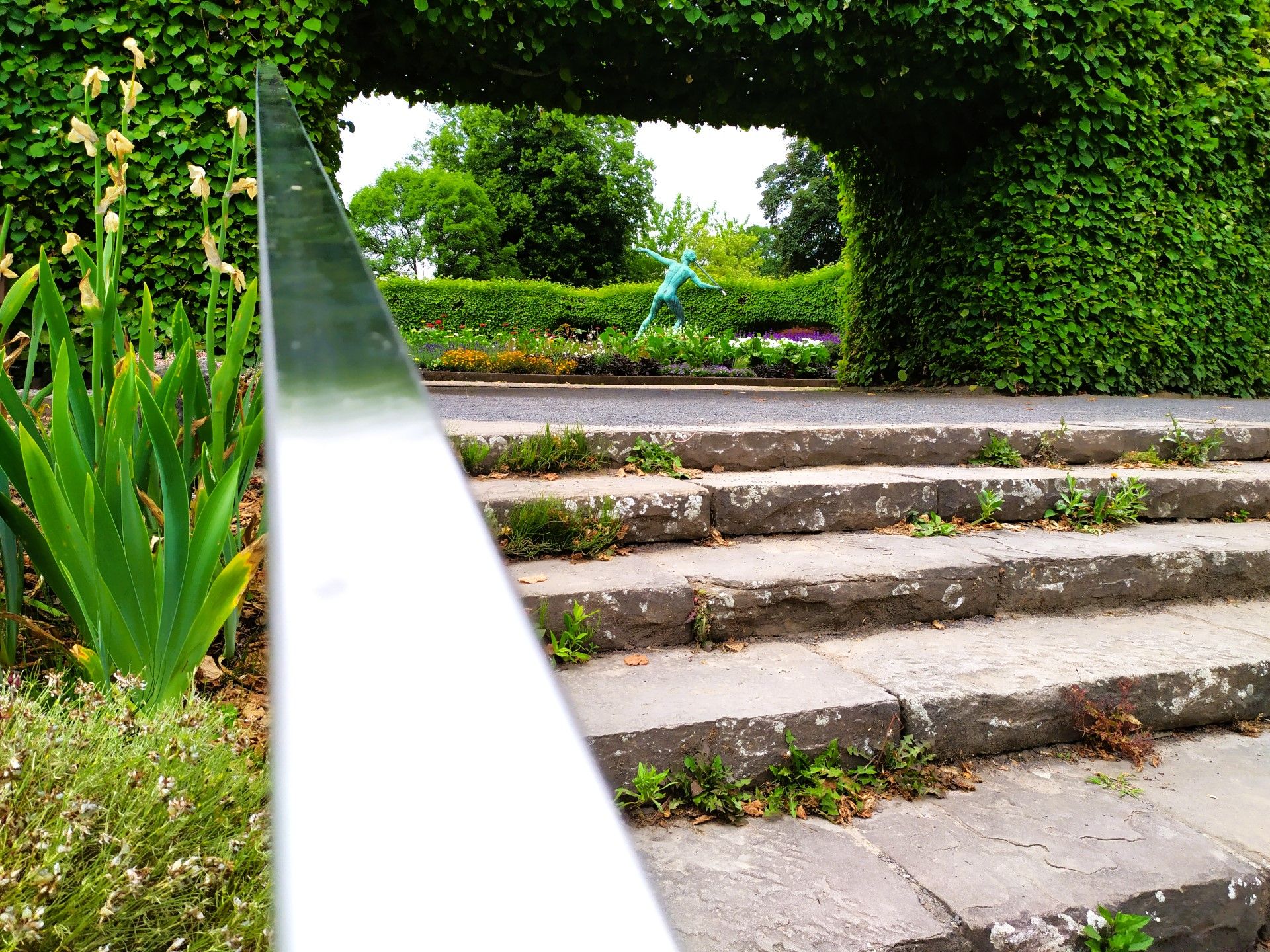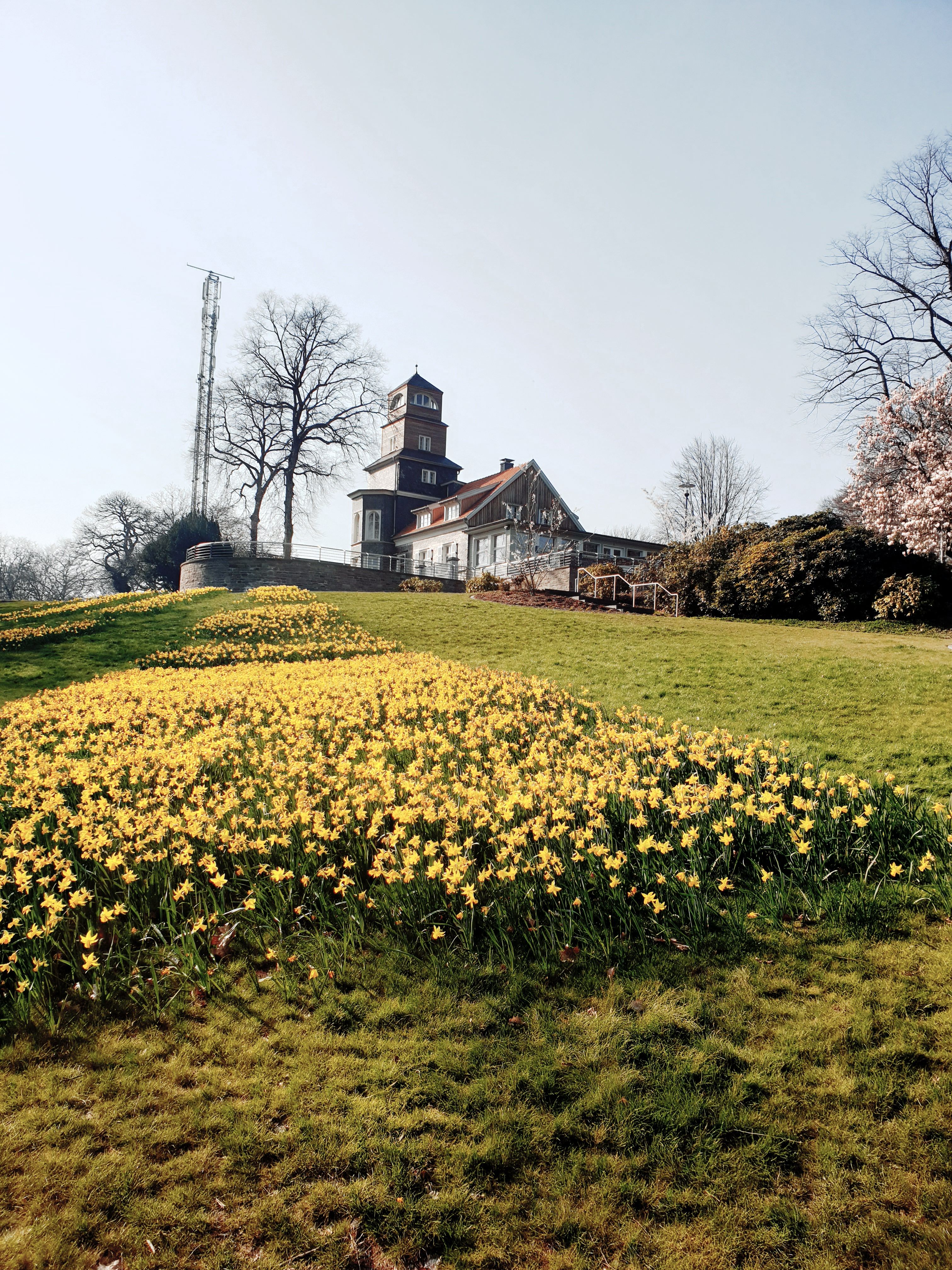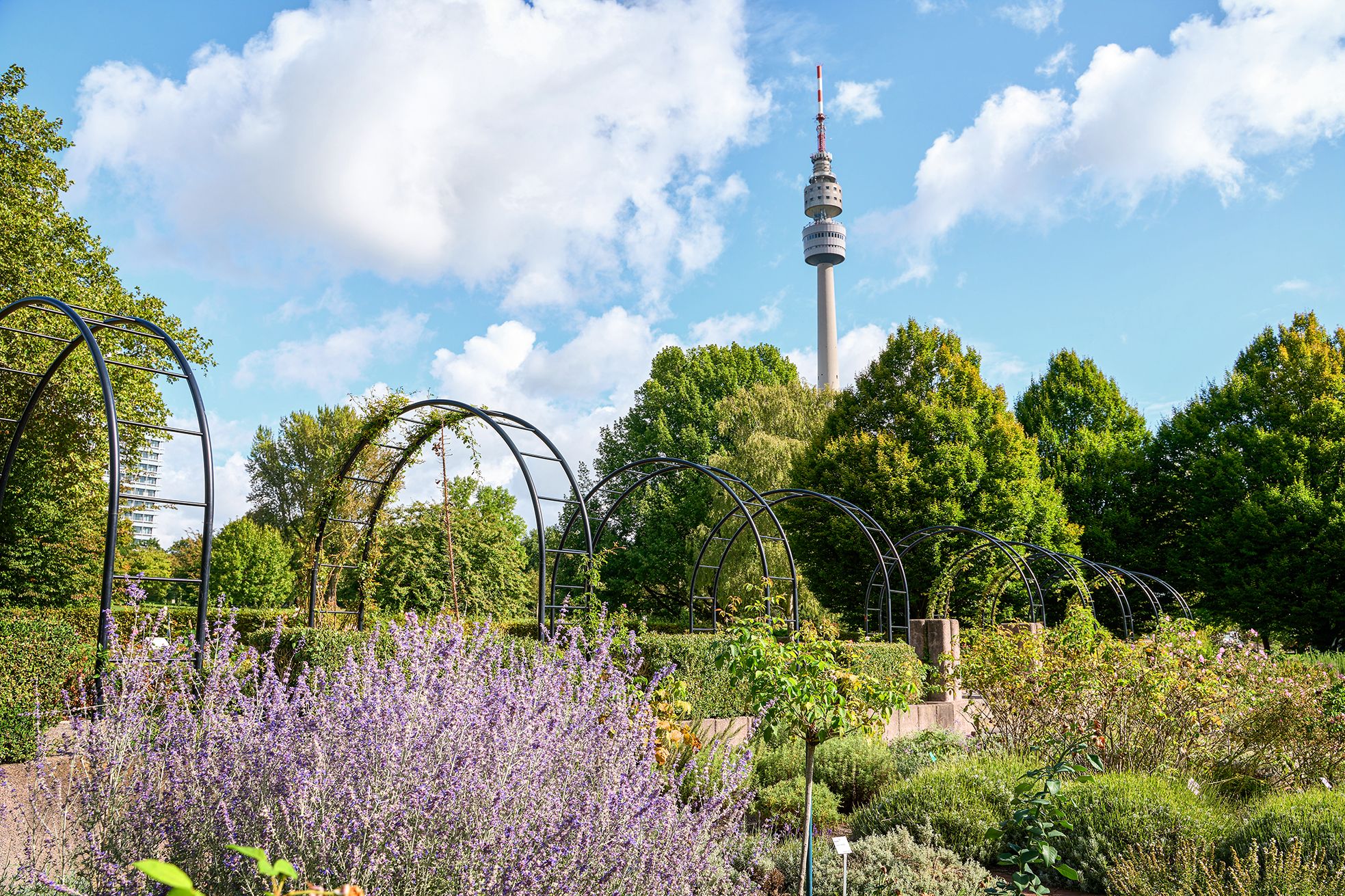As a diverse park landscape in North Rhine-Westphalia, Nordsternpark in Gelsenkirchen is an ideal reflection of the structural change that has been taking place in the Ruhr region since the 1950s: From black to green, from industry to culture. It is an idyll with attractions such as the amphitheater, the Nordstern tower and the double arch bridge, which was created on the former site of the Nordstern colliery after its closure in 1993.
For the 1997 Federal Horticultural Show, the planners developed a concept that provided for the preservation of the historic colliery buildings, but added modern buildings and an adventure landscape. It included the course of the Emscher sewage river, which had been cleared for renaturation, and the busy Rhine-Herne Canal waterway, which divides the 100-hectare Nordsternpark in the middle.
Day-trippers strolling along the riverside promenade on the centrally located Emscher Island today can hardly believe that miners once carried out their hard work underground here, although buildings such as the coal bunker, the coal mixing plant and the winding towers of shafts 1 and 2 still bear witness to their history. Everything appears picturesque, calm and tranquil: straight lines of sight, deliberately placed diagonals, clear geometric structures and eye-catching bridge constructions characterize the landscape.
The water of the canal ripples gently. The leaves of the trees blow in the wind. Large barges and small boats slowly pass by those seeking relaxation. Cyclists cross the path and greet you in a friendly manner. They ride along the water from one Ruhr district town to the next, stopping at viewing benches. Nordsternpark is located on the Emscher Cycle Route and is part of the regional R25 cycle route. It is part of the European Garden Heritage Network and the Route of Industrial Heritage.
Hercules of Gelsenkirchen
If you finally pass the 400-metre-long graffiti wall on the edge of the canal, which is lined with countless colorful motifs, slogans and spray tags, you will reach one of the most fantastic event locations in the Ruhr region: the Gelsenkirchen Amphitheatre. The spectacular open-air stage with space for up to 6,100 guests is the annual venue for concerts, festivals and other cultural highlights. The most popular events include the Rock Hard Festival, the Folkfield Festival and the ExtraSchicht Night of Industrial Culture. At the latter, the tiers of the amphitheater are bathed in colourful laser light and the glow of firework rockets - one eye-catcher follows the next.
There are two other attractions that explorers should not miss during their visit to Nordsternpark: Firstly, the 36-metre-high double-arched steel bridge, which was built in 1996 for the Federal Garden Show, draws attention to itself. Its two bright red, asymmetrical arches attract passers-by almost magically.
On the other hand, the Nordstern Tower is a living symbol of structural change, which was given its current form with four additional glass floors as part of the European Capital of Culture RUHR.2010 project. The landmark thus has 18 floors and, with its visitor terrace at a height of around 83 meters, offers the perfect view of other sights in the Ruhr region such as the Tetraeder in Bottrop or the Oberhausen Gasometer. The 23-tonne Hercules sculpture by artist Markus Lüpertz looks down on the region from above alongside the guests. The monumental statue is a symbol of great tasks, courage and strength. Inside the tower, guests can explore challenges that have already been overcome in the "Change is always" exhibition.
Plans for IGA 2027
As part of the International Garden Exhibition (IGA) Metropole Ruhr 2027, Nordsternpark will be one of five selected Future Gardens, i.e. a location where sustainable landscape architecture of the future will be permanently visible. The former turning basin of the Nordstern colliery on the Emscher Island will be transformed into a lively meeting place for the show with a large outdoor staircase, restaurants, sports and play areas. The old coal bunker will be transformed into a "Green Tower" with a green façade and roof. In addition, the so-called IGA Plaza, a representative entrance area to the exhibition from which the "Green-Blue Ribbon" extends, is to be built near the amphitheater. This water area is intended to clean the surface water from the parking lot through appropriate planting.
